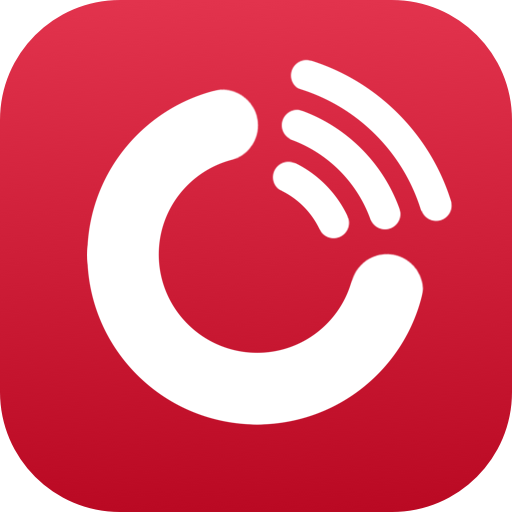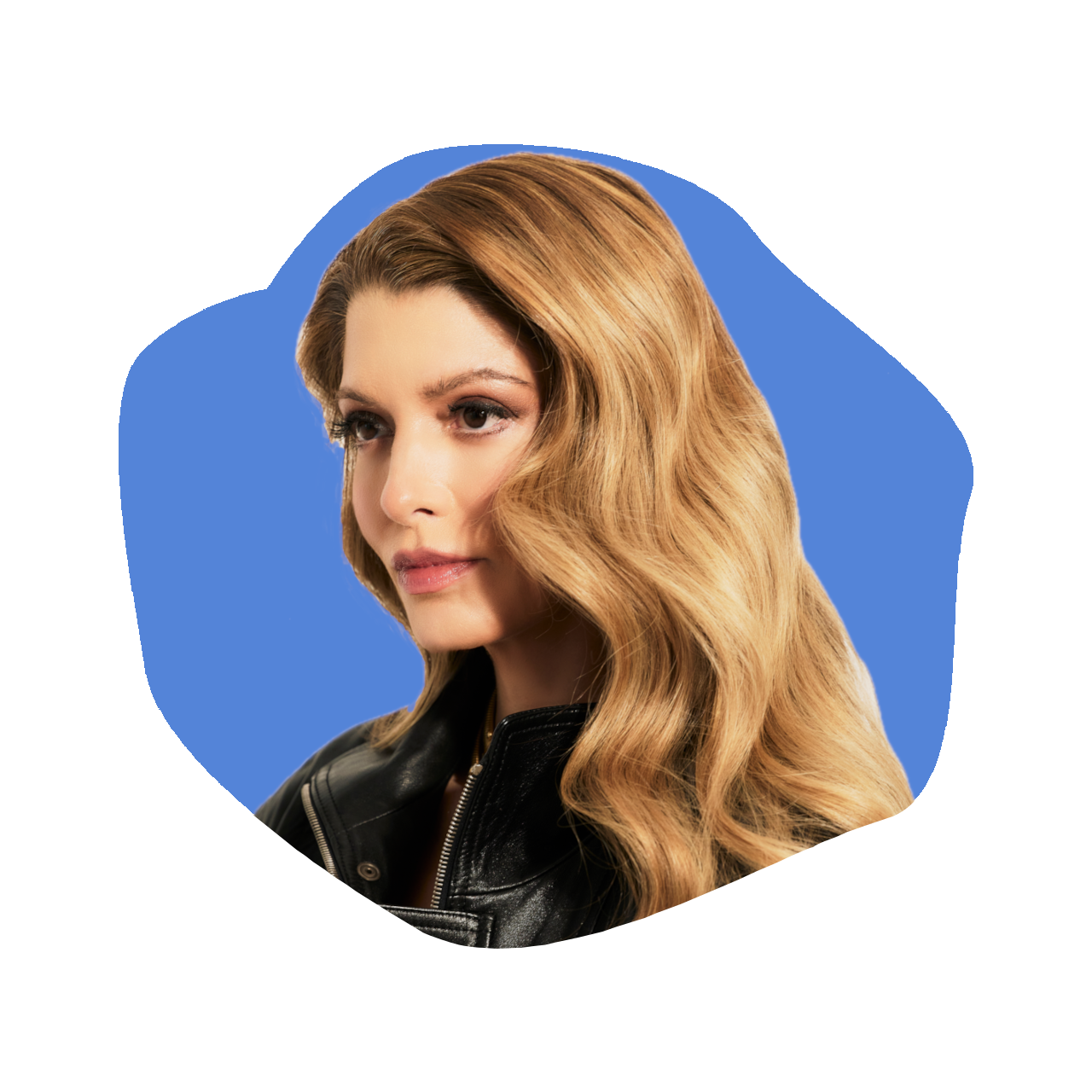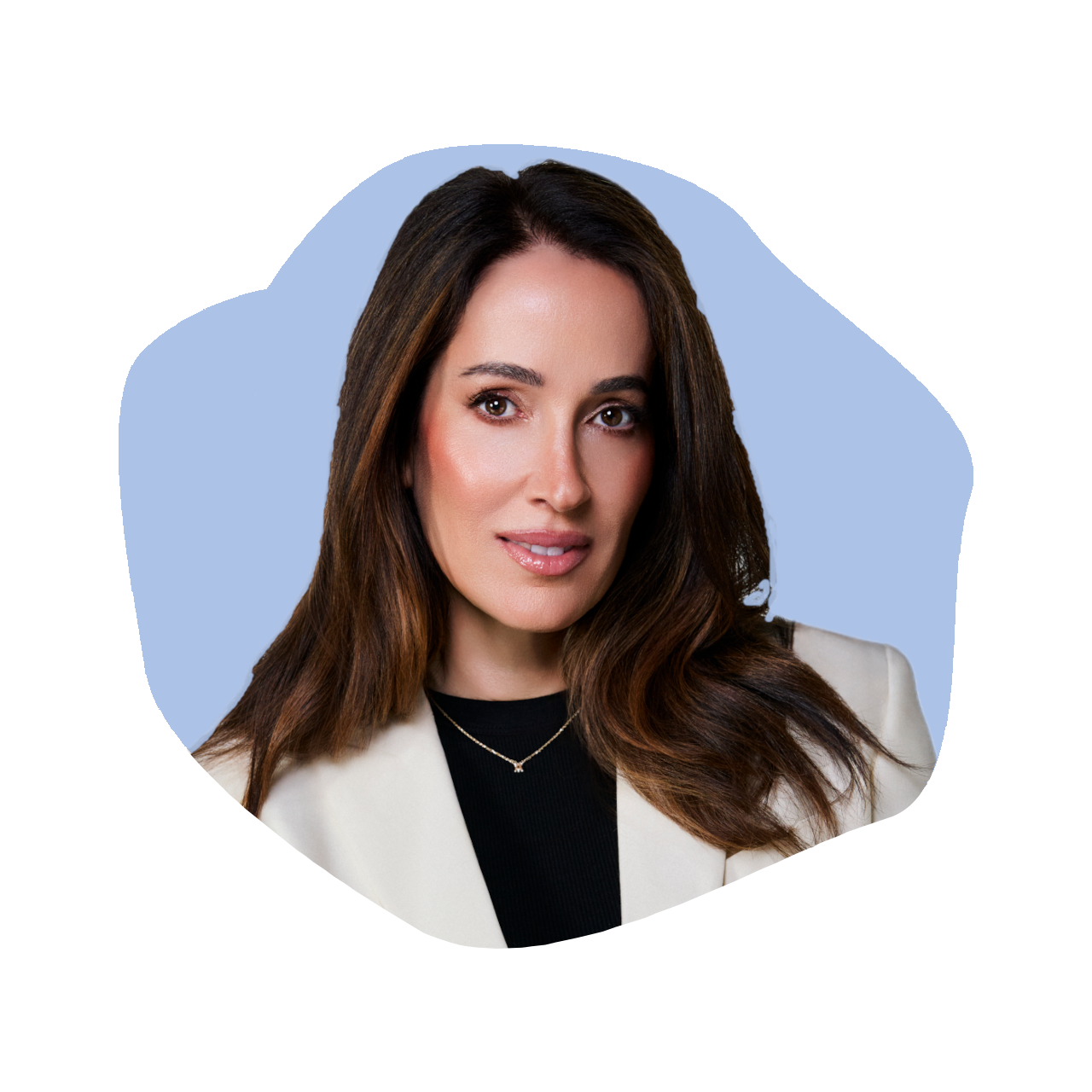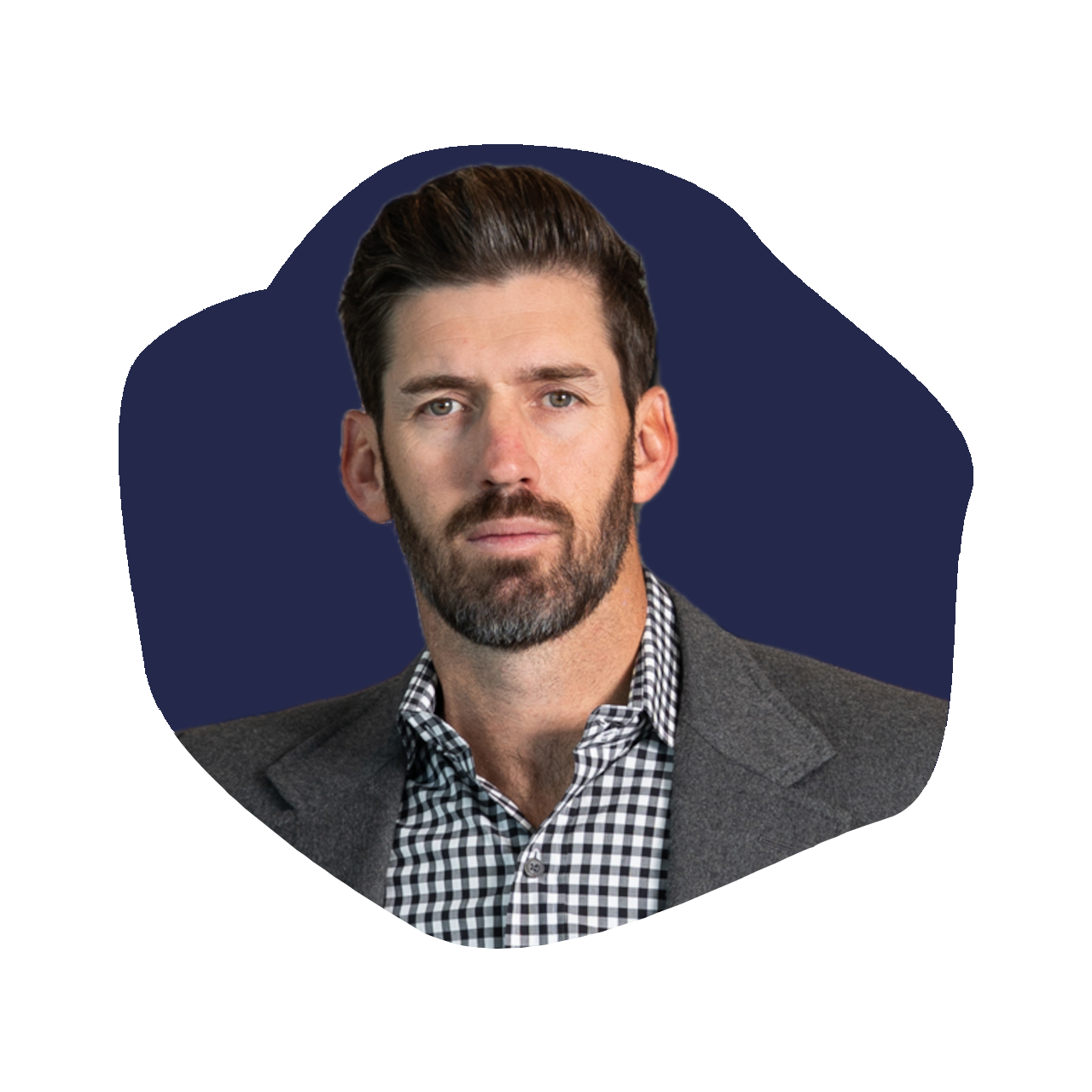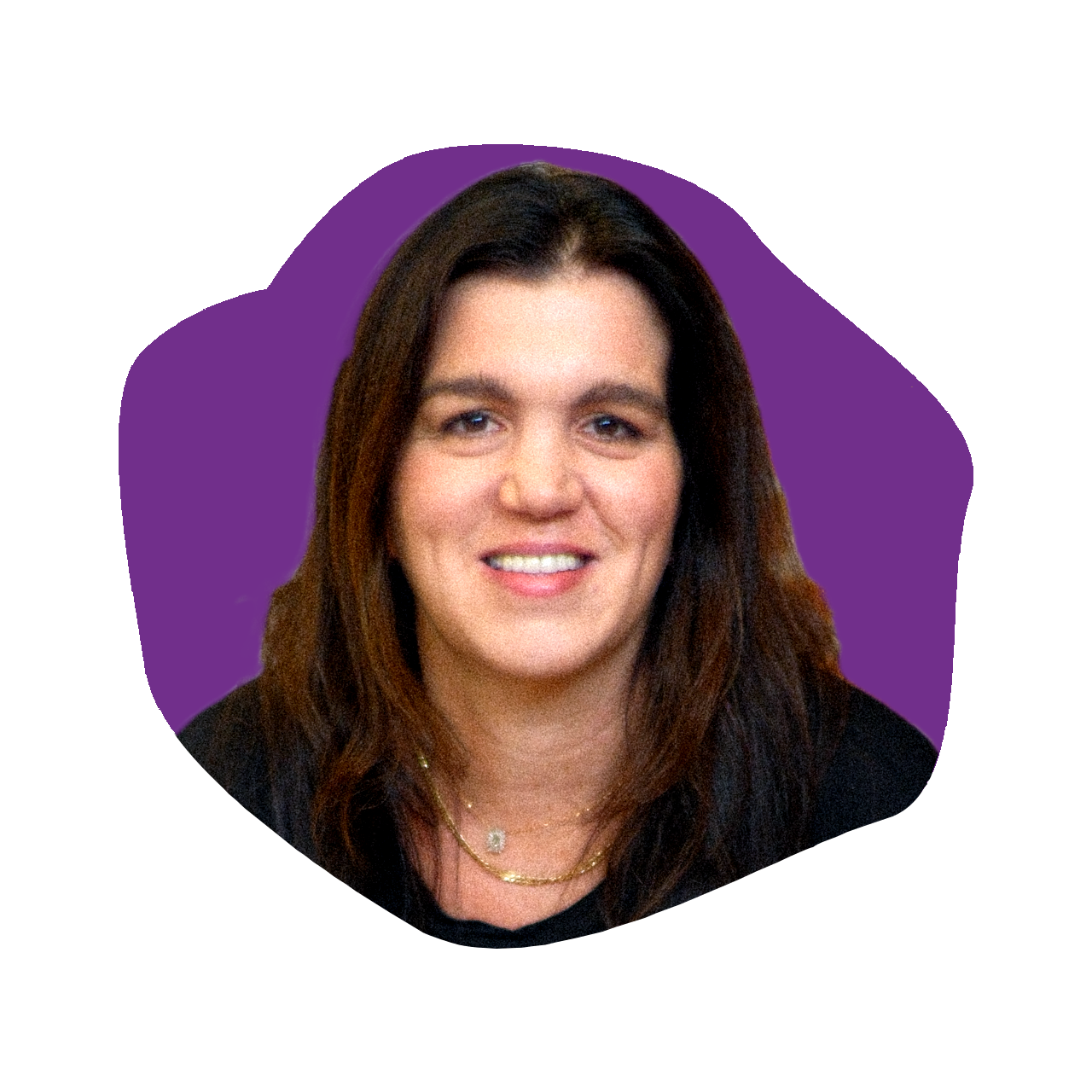Lindsey Johnson: Co-Founder & CEO of Weezie
Episode 671
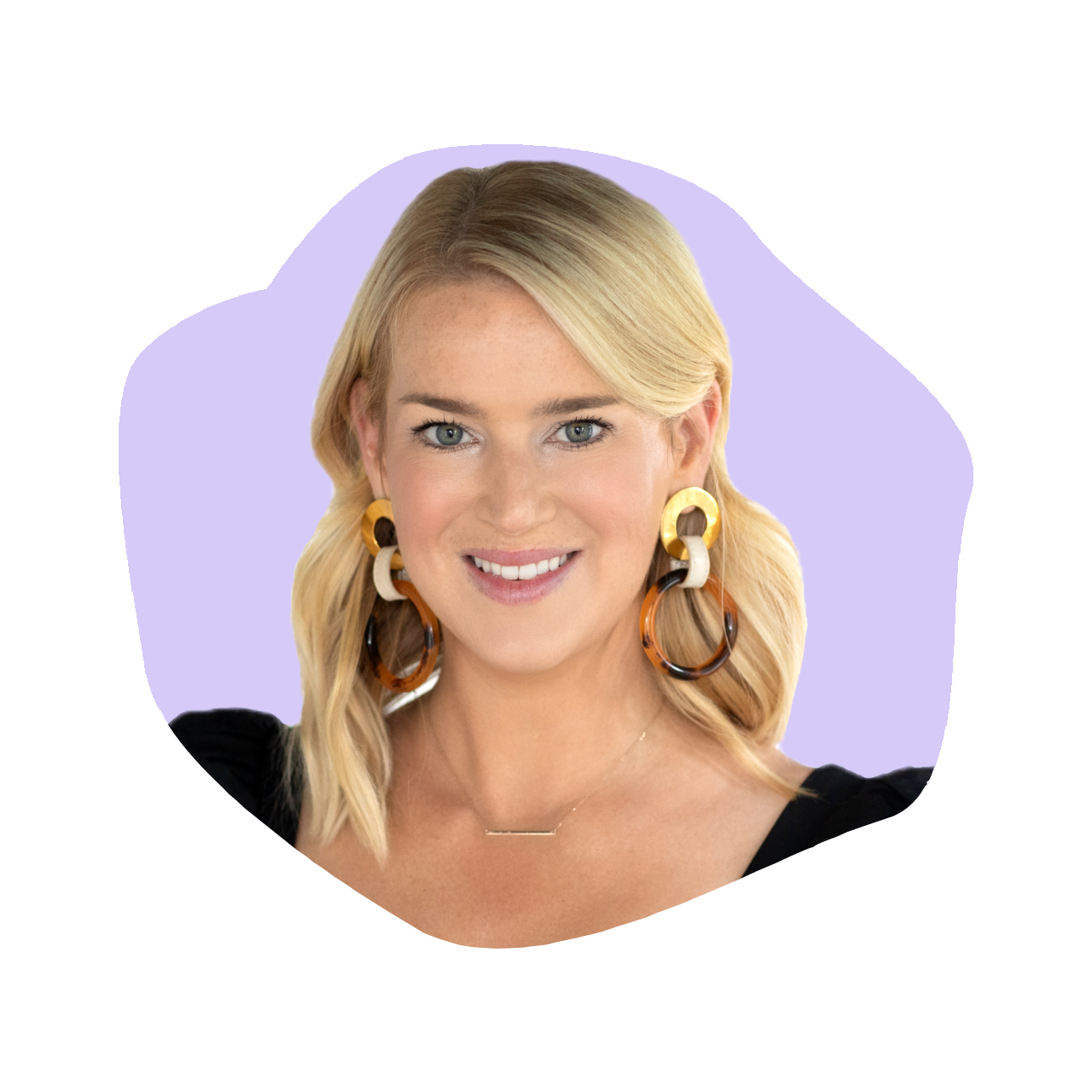
On this episode of The Kara Goldin Show, we’re joined by Lindsey Johnson, Co-Founder and CEO of Weezie, the luxury towel and robe brand that’s elevating the everyday with beautifully crafted, design-forward essentials. After a successful career in finance at companies like Morgan Stanley and BlackRock, Lindsey made a bold pivot into the world of consumer products—and built a brand that’s quickly become a go-to for high-quality, customizable bath essentials.
During our conversation, Lindsey shares the story behind launching Weezie, how she and her co-founder spotted a white space in the bath category, and the creative process that goes into developing new products and partnerships. We talk about her approach to brand-building, how collaborations with interior designers like Meg Braff come to life, and how digital marketing and social media have fueled Weezie’s growth. Lindsey also offers insight into her leadership style, lessons learned from building a team, and advice for anyone looking to make a major career pivot.
Whether you’re a product-obsessed consumer, a DTC founder, or someone considering a leap into entrepreneurship, this episode is packed with wisdom, inspiration, and actionable takeaways. Now on The Kara Goldin Show.
Resources from
this episode:
Enjoying this episode of #TheKaraGoldinShow? Let Kara know by clicking on the links below and sending her a quick shout-out on social!
Follow Kara on LinkedIn – Instagram – X – Facebook – TikTok – YouTube – Threads
Have a question for Kara about one of our episodes? Reach out to Kara directly at [email protected]
To learn more about Lindsey Johnson and Weezie:
https://www.instagram.com/lindsey_weezie/
https://www.instagram.com/weezietowels/
https://www.linkedin.com/in/lindseydorman/
https://www.weezietowels.com/
Transcript
Kara Goldin 0:00
I am unwilling to give up that I will start over from scratch as many times as it takes to get where I want to be. I want to be you. Just want to make sure you will get knocked down. But just make sure you don’t get knocked out, knocked out. So your only choice should be go focus on what you can control. Control. Hi everyone, and welcome to the Kara Goldin show. Join me each week for inspiring conversations with some of the world’s greatest leaders. We’ll talk with founders, entrepreneurs, CEOs and really, some of the most interesting people of our time. Can’t wait to get started. Let’s go. Let’s go. Hi everyone, and welcome back to the Kara Goldin show. Super, super excited to have my next guest with us, Lindsey Johnson, who is the co founder and CEO of Weezie, and if you have not heard of Weezie, we’re gonna be so excited if you’ve heard of Weezie and shop from Weezie, you’re going to be more excited to hear her backstory. She is a total badass, and I’m very, very excited about what they’re doing. So we see is the luxury bath and Rogue brand that’s redefining everyday self care. And she’s gone from working in finance and some of the top firms in Wall Street, launching a brand that’s become a go to for beautiful, customized towels and robes for everyone’s home, but also for gifts and really, really stunning. So I can’t wait to dive into her journey of really creating and coming up with this idea. CO founding it with her partner, and really spotting a hole in the luxury market that she’s been able to really design and and kind of create her own niche in that and really grow it successfully. So, so excited. You’re with us here today. Lindsey,
Lindsey Johnson 1:58
thank you so much for having me. I’m thrilled to be here. Very, very excited.
Kara Goldin 2:02
So welcome to the show. So let’s take it back. What inspired you to launch Weezie? You had a successful career in finance, working for some of the top firms on Wall Street, but you decided I’m going to go and launch this brand that I believe I can. Or maybe you didn’t even know if you believed it. Maybe you really thought, you know, there I want this product, and I’m gonna go create it and see what happens. I’d love to hear the backstory.
Lindsey Johnson 2:35
Yeah, you actually hit the nail on the head, because I was not initially gung ho on launching this business. It really was a born out of an experience that my co founder had when she was registering for bath towels for her wedding. So she was at a department store with, you know, a dozen different options of towels and a dozen different price points and designs, and was felt like feeling very overwhelmed by the purchase experience, and when she ultimately settled on a brand that was recommended to her by the sales associate, she really was disappointed in the quality of the product when she got it. And she is our creative director, so she is design, you know, has a design background, and really cared not only about the quality of the product, but also the esthetics. And so when she got the product embroidered, which was a totally offline experience picking out, you know, what she wanted her new monogram to look like, and what colors and designs she wanted the towels to be. She had to go pick them up in person. You know, several weeks after picking them out, they were super expensive, and then the towels themselves did not really live up to the hype. So they were just the towels that were sort of shedding and moving the water on her body, but not actually absorbing, although they felt soft to the touch, and she was really disappointed. And my co founder is actually a long time friend of mine. We’ve been friends for over a decade at that point, and she was asking some girlfriends for a recommendation, what towels Do y’all use? And that simple question really snowballed into what became Wheezy. So my background was in finance, and I was actually attending Columbia Business School at the time with the goal of going into consumer venture capital. So I had been meeting with a lot of early stage companies and specifically looking at businesses in the consumer space. And so she said, You know, I might start this company. What do you think? And I at the beginning, I’m really, truly a pessimist by nature. So I was like, this is a crowded market, you know, who cares about their towels? Like I was sort of the naysayer at the beginning, Devil’s advocating her idea. And the more we talked about it, the more I was like, you know, she’s on to something here. Because I would ask friends, other friends and colleagues, when did you buy your towels? Where did you buy them? How much did you pay for them? Who makes them? What are they made out of? And as I started talking to consumers, I realized there was this hole in the market for a luxury quality towel at a more affordable price point that had beautiful esthetic options that you could customize and design and have that totally be through a seamless online. And experience all delivered through a brand that people could relate to and love and fall in love with and feel loyalty, and that really did not exist at the time that we see was created.
Kara Goldin 5:13
So was your, was your co founder? Was she in consumer products before? Was she?
Lindsey Johnson 5:19
She’s actually a graphic designer by background, and so she was working as a creative director at bustle of the media business. And so she was really on the creative side, and kind of the branding side. And then my background was more in finance, and that was another reason why I think I got really excited about doing this together, because our skill sets are very complimentary.
Kara Goldin 5:39
Super, super fun. So super fun, but also a really, really scary time for you guys. And I bet you know in many ways, you didn’t know what you were embarking on. I mean, the the idea of actually launching a company is such a big deal. But in addition to that, it’s, you know, all so new in terms of, you know, picking and packing and the physical goods and all of that. So, so how did you get the courage to actually start?
Lindsey Johnson 6:15
I think for me, it’s all about the data and collecting enough information to make sure you, as the co founder or founder, feel confident in taking that leap. And so that did not happen overnight. For me, it was probably 12 to 18 months of consumer surveys, finding manufacturers, testing product, getting comfortable with our working relationship. I mean, we went from being very good friends to then embarking on what really becomes a marriage and a co founder relationship. And so there was a lot of things that I wanted to sort of pressure test before we took the leap of faith. So she always jokes she was like, I thought Lindsey was a flight risk the first six to 12 months. Because I really was sort of keeping one foot in this idea that I could go into venture capital and one foot in the idea of we could co found Weezie. And I think the thing that really pushed me over the edge, ultimately, was the data and information. So all of the customer surveys, we surveyed over, I think it was about 2000 customers, and realized that the problem was very clear. The hole was open there to create a brand, to create a better product, more affordable product, something that, again, that people could fall in love with. And then the next phase was finding the solution, right? Are we the two people to bring the solution to life? Can we find a manufacturer that can actually create this product that would be maximum softness, maximum absorbency, durable, and then we can also customize it? And so that was, you know, the hard part. It took a lot longer than just sending out a survey and looking at the results. And once we found our manufacturer and went through again dozens and dozens of samples, I got really excited about bringing that solution to market.
Kara Goldin 7:57
So where did the name come from? So Weezie
Lindsey Johnson 8:01
is a modern and more playful nickname for the traditional name Louise or Eloise, both of which are family names for my co founder and myself. We both have southern roots, and so I think monogrammed towels, you know, typically are thought of as more traditional, more southern. We wanted to make it a little bit more playful and approachable, and so we love the nod to the idea that Weezie also rhymes with easy. So we say things like, make it Wheezy. Make monogrammed towels. Wheezy, Wheezy, like Sunday morning. So it kind of has this brand vibe, but also a nod to the traditional kind of roots of monogrammed linens.
Kara Goldin 8:43
So what did the earliest version of Wheezy look like, and, you know, in terms of skews and in terms of, you know, maybe even color trends. But what was the initial product launch?
Lindsey Johnson 8:58
It was very streamlined relative to what it is today. So the initial product launch was just a core bath line. So that was bath towel, bath sheet, hand towel, wash cloth and makeup towel. And those products we sold, and I think it was five different piping colors, but all of the towels were white. So in our research, we found that the vast majority of consumers prefer white towels, but we added, sort of our signature piped edge with rounded corners, hanging hooks, so it was really like the minimum viable product. Honestly, has not changed at all, but we’ve added to our assortment. So we’ve added more design options. We’ve added different price points, different giftables, totally new product lines, but we really started out very streamlined.
Kara Goldin 9:42
So luxury, but accessibility, right? That’s that is what I think about when I think about Wheezy. And what does that mean to you? What is the promise to this consumer? And how do you keep that going? While not getting too expensive, or getting people to come back to your brand, all of those things,
Lindsey Johnson 10:06
I think about luxury for us is really making that approachable, not only in price point, but also via our brand. So making that perspective a little bit fresher, newer, approachable, welcoming, or previously, I think this idea, again, kind of going back to the thought of monogram linens, feels very stuffy, and it feels like something you buy for your guest room and you leave them there and you don’t want to use them. We really wanted to kind of celebrate this idea that life is meant to be enjoyed. We want to bring these moments of joy and delight into your every aspect of your life, whether that be via through our towel or a robe or a beach towel or a spa headband, all these different products we make that kind of touch your everyday life, and we want that to be a super luxurious product experience, so like we’re giving you the absolute best of the best product, But making it feel a little bit easier to access through both price point and brand. And I think experience customer experience.
Kara Goldin 11:10
So when you thought about building the Weezie brand, I mean, it was you don’t have stores right, especially in the beginning, when you’re first getting the word out, what? How did you find those original audiences? It’s not like the company I started hint we could go out and sample on beaches. I don’t think you were really doing that, right? You’re you’re trying to get people to understand that you really are something. But how do you get them to do that? And how do you get them to become consumers and really know the brand Weezie,
Lindsey Johnson 11:43
I think at the beginning, when you launch, credibility is key, and so building that credibility and awareness without a physical retail store is challenging, but I think we were able to do that mostly through relationships With press. So we focused our launch on getting stories with top tier editors that could tell our story and give us that credibility, so that when someone Googled Weezie or looked for us, that we had these reviews from editors that people trust and brands that people already trust, they already had the credibility. So getting that stamp of approval at launch was huge. So Fast Company wrote the article that launched the business the day we turned the Shopify store on, and then that then got picked up by several other outlets preceding that, and I think that gave us the credibility and awareness. And it wasn’t until probably six months, and maybe a little bit longer, that we started to spend money on advertising, because I felt strongly that I wanted to see how far we could take the brand without paying money for paid media. And I think that helped us kind of work out all the kinks on our website and kind of understand who our customer was in the early days and really build things for her, versus spending a ton of money on day one to sort of acquire customers and not have worked out all those kinks. So paid media for us was the name of the game, and since then, we have actually opened our own retail store. So our flagship store is in Atlanta, Georgia, where the company is based now. So we do have other distribution channels outside of DTC, but at the beginning, we were really focused on building that credibility with our customers.
Kara Goldin 13:22
That’s that’s really, really smart. So you’ve also partnered with interior designers. Can you talk to me about partnerships and how that’s really helped you to grow the brand and and bring in new consumers?
Lindsey Johnson 13:39
Yes, partnerships are multi fold for us in terms of the purpose they achieve. So number one, again, back to credibility. Working with people that are, you know, really well known in this space, and have beautiful taste, and they already have followings in their own right, of people who love their taste and love their design. So we’re working with them and therefore associating with them and kind of building our own credibility. But also we get access to like these, you know, beautiful prints and beautiful designs that they have. And we can take those product or prints and put them on our products and kind of bring them to life in a new way. And that’s really exciting for our customer base. So it’s really helpful, not only in terms of attracting new customers via the designers following but also giving something new for our customers to be excited about. So giftables have become a big part of our retention strategy. So customers who might come in through our signature bath line and are really looking to upgrade all their bath towels in their home, you know, you’re not buying bath towels every six weeks, right? So we need to kind of give them a reason to come back to us, not only, you know, for product, but also content. So they’re coming back to us to consume all the content that comes out of the partnership and the storytelling aspect. But also they can buy a toiletry bag, or they can buy, you know, something that’s like, you know, a little bit cheap and cheerful, so something that’s not as hefty of a price tag as. Replacing all the towels in their home, but they can buy something small that’s a piece of the partnership, like a beach bag or a pillow, etc, and that could be for themselves, or it could be also for a gift. And so that’s I think partnerships really help us not only attract new eyeballs, but also retain our existing customer base.
Kara Goldin 15:17
Yeah, definitely. What’s, what’s one product launch that you’re especially proud of, and why
Lindsey Johnson 15:27
that is such a hard question. It’s like, because we, right now, it’s a it’s such a huge part of our growth strategy that we’re launching new we call them shops every six weeks. So I think in terms of the shops, the shops that are launching, I think we recently just launched a huge partnership with an interior designer, Meg Braff, and that, I think, was something I was really proud of in terms of just the breadth of products that we brought to market, some new, some existing. So we launched pool lounge covers with her, which we’ve had before. But then we also brought in these pillowcases that are teary, pillowcases that actually sit on a lounge cover, which are really kind of a new product for us. And those took off. We launched a hat, holding beach tote with her. So all these different products that are really not core to our bath line, but people were really excited about and many of those products are already sold out. So that was, I think just every shop feels like it’s bigger and better than the last, and so we’re just planning these, you know, bigger moments that are again, drawing people in both new and returning.
Kara Goldin 16:36
I remember we had a home brand on a few months ago, and the founder and CEO was I asked him a question about his biggest mistake, and in terms of different products that he had launched, and he had this idea that That beds should have a skirt, because in his home that he grew up in, every every bed had a bed skirt on it. So he every bed he needed to buy, you know, millions of those. And he said, like, 15 years later, he still has bed skirts in his inventory, because he bought way too much. Because he was like, nobody changes the bed skirts, right? You leave it on there, unless it gets dirty and or you change beds, or something happens. Is there anything like that that you really thought, Okay, we need a lot of this because it’s going to do great, and maybe it, it really didn’t take off like you thought.
Lindsey Johnson 17:38
I mean, I think there’s definitely been products that we’ve tried. We tried to sort of limit our downside exposure in terms of the quantities we’re buying. So we had a few examples would be like, people have been requesting for dog towels. People write it in all the time, saying, I wish you had towels for dogs. Your towels are too expensive for dogs, but I want one for my dog, and I want to customize it. Um, and we launched dog towels, and those did not take off per everyone’s requests. And so there’s been things like that where we’ve responded, but we’ve tried to sort of be responsible in terms of how much money we’re putting behind it. We’ll do sort of like test and iterate, so buy small, see how it goes, and then kind of continue to build the inventory of if things take off. So there’s certainly times like that where we’ve purchased or designed things that did not take off with our customer base. But I’m always saying, you never know until you try.
Kara Goldin 18:34
Yeah, definitely, definitely. So you’ve prior to launching Weezie, you had invested in some early stage consumer brands companies. What lessons do you bring from having been an investor and now you’re actually on the other side of the table, launching your own brand that you think is important for any founder to to to or or CEO, to realize,
Lindsey Johnson 19:04
sure, I think this might be counterintuitive to what most people would think I would say, but I always say, don’t raise money unless you have to. So coming from the investment side, my number one learning was I didn’t want to raise venture capital. So I and the reason for that, I think, is because you do get, I mean, handcuffs is a strong word, but you you know you’re beholden to someone else’s timeline and someone else’s vision, because you now have their capital in your hands. And you know, if things go off track, there’s very little leniency to change kind of the exit trajectory or the timeline for the business. And I think for us, I was really proud of us sticking to our guns that we did not want to raise from venture capitalists. And we really bootstrapped the business for almost a year before raising a very, very small friends and family round. We’ve been profitable since we launched so. So I think just trying your hardest to not take external capital unless it you truly need it, and like your business model warrants it, I think there’s plenty of businesses that could not launch without capital, but if you have that choice and the autonomy to decide to keep the business into the, you know, the hands of the employees and the founders. That is always a smart thing to do, because I think you really control your own destiny. Because I really didn’t learn. I mean, this sounds horrible, but I think of all the businesses I invested in, I mean, a lot of them, I was making mistakes in terms of the ones I was choosing versus not choosing. I learned most of the lessons on the job at Weezie. You know, I think it’s really hard to be an investor and, like, know what it’s like to actually run a company? It’s, I think it’s easy to think you can tell someone how to run a business, but you don’t actually get it, so to speak, until you’re in the seat.
Kara Goldin 20:55
Yeah, I totally agree. So I’ve seen many mistakes over the over the years, and talked to many friends who have been on the investing side as well. That Hindsight is 2020 but I think it’s, it’s so true. So what advice would you give to somebody looking to to pivot out of what they’re doing you and I were talking about that seems to be, I think, especially five years after COVID started, a lot of people are really starting to think, Okay, what am I doing? And is this what I want to be doing? You know, many companies are now asking people to come back into the office. Maybe that’s like, where people are starting to rethink about what they really want to be doing with the rest of their life. Or, you know, maybe they just felt like they were on this hamster wheel and couldn’t get off and and now they’re seeing Wheezy and inspired by your story, and they want to go do something that they believe in that makes them proud, which is, I think, you know, sort of the goal for the Kara Goldin show too, is really to inspire people to go and do live their best life and create really good things and companies. But what advice would you give to somebody who’s really looking to go out and do something different.
Lindsey Johnson 22:25
I think, to be very clear on what it is you’re solving for. So what why do you want to be a business owner? Is it the product and the vision, or is it a lifestyle choice? And you know, there is no right answer there. It’s very personal, and it could be many of those things, right? And I think getting super clear with yourself on what it is you’re trying to build, and how big do you need it to be for it to be successful, whether that is from, like, a financial perspective, or from a self, you know, satisfaction perspective, or whatever it is. I think my co founder and I went through this when we started running out, how big do we need Weezie to get for us to say this was a success? And I think getting really clear on that, because the advice I give people I get, you know, calls all the time from people saying, Should I hire this person or that person, or should I invest in this marketing thing or that marketing thing? And it really depends on where you’re trying to go. You know, if you’re trying to start a business that can afford you flexibility. You don’t really want to hire a lot of employees. You want to work from your house. You know, there’s all these different things. That’s a different business than building something where you’re managing a team of people in person, and you need X amount of people to get it off the ground. And, you know, that’s just a different business, right? So I think just getting super clear on your objectives and like, why your why, why? Why you’re starting it and sort of build backwards from there. And I think also just surrounding yourself with people, if it is something you intend to, like, hire a team, surrounding yourself with people who are smarter than you and all the different respective fields. I mean, Liz and I could not have done this without one another. Our skill sets are so complimentary. And I think just looking for people who fill the gaps that you have and just are true experts in their fields. Because as a CEO, you know, you’re really tapped with being, you know, good at a lot of different things, but you need to hire people who are excellent at their one specific thing, and so just trying to find those people who can take your business to the next level, because they bring some some level of expertise that you don’t have yourself.
Kara Goldin 24:30
What do you think is the key thing that you’ve learned along the way, and that maybe you didn’t know you talked about your investing days, but something that’s that’s really been a surprising lesson that was very humbling to you, and building your own company that has kept you up at night that you didn’t know if you’d get through, but you did, I
Lindsey Johnson 24:57
think so candidly, I didn’t hire. Or, I mean, excuse me, I had never managed a single person before, starting Weezie, and now we have a team well over 50 people. And I have had to learn on the job and also off the job, you know, through, you know, work on myself and my management style, on how to lead people. And I think I made plenty of mistakes, and I probably have plenty more to make down the road in terms of hiring people and retaining people, either hiring the wrong person or not letting the wrong person go soon enough. And you know, just you learn so much about people through being in the seat of a CEO. And I think it’s, it’s always humbling to realize how important leadership skills and team building skills and just people are the heart of everything we do. And I think it’s very easy for someone like me, who worked in finance, where everything was ticked and tied in a spreadsheet and everything had an answer to become now a CEO, where I’m in the business of managing people. I’m no longer in the business of being in a spreadsheet. Of course, I am in spreadsheets and use numbers all the time, but I think that has been something that was very eye opening and surprising to me, which sounds so naive, but it’s the truth that I really learned it on the job of how much the CEO’s job is to manage a team and what comes with that. And I think it only becomes more complex as the business gets bigger, and it’s something that I’m still learning right like I’m reading leadership books all the time and listening to podcasts all the time, but I think that’s been just the biggest surprise to me is how much of my job is focused on people, and it’s now that I’m in the seat, it’s obvious that that should be the case. But of course, if you asked me that five years ago, I would have been like, no way that you know my whole job is managing a team.
Kara Goldin 26:51
Yeah, definitely. And I think that that’s where culture comes in too, because if you have the right team, they’re gonna give you good feedback as well. So we
Lindsey Johnson 27:00
invested so much in our team and our culture and the business performance has followed. I think if you look back to the days when we were kind of haphazard about all the things, culture and team, it was, you could see the numbers, and I think it really does impact business performance when you invest in the people and you invest in culture and team and all those things, it’s not just, you know, for the sake of investing in those things, it’s actually does impact the company’s performance as well.
Kara Goldin 27:31
So if you could look forward five years and imagine, wow, we accomplished a really big thing, what would it be? I mean, what’s that dream, that moon shot that you think that’s a long way away, but it’s not really a long way away. We talk
Lindsey Johnson 27:48
about that a lot. I think we we have the vision to be, you know, a household name in the luxury design home, good space. And I think we’re just getting started in terms of the products we want to develop, and kind of the areas of the home we want to touch. But I want to be, I want everyone to know who easy is. I want us to kind of set the standard for luxury quality products in and outside of the home. And so we want to, we want to be that household name, and we want to stand for luxury, and kind of set the bar, really, for luxury products. And so everything we can do to sort of, you know, continue to build out our product assortment, but also continue to build out our content and our storytelling, and kind of really building this world of Weezie is really the goal. I think we just want everyone to know who we are and have our products in their home.
Kara Goldin 28:39
Yeah, definitely. Well, Lindsey, this has been such a fun and inspiring conversation. You’ve done such an incredible job in building Weezie. Everyone needs to check it out. We’ll have all the info in the show notes, but I really appreciate you coming on and sharing your journey with us, and best of luck with everything. They’re absolutely gorgeous products, if anyone’s looking to redo your home, maybe not your home, but the inside of your home, inside of your bathrooms, your your robes, and especially gifts. I think that you guys have such an incredible I’m definitely going to go on there for some weddings that I have coming up. So, yeah, very, very excited. So thank you so much Lindsey, and the company is called Weezie, so definitely check it out. Thank you again. Thank you so much Kara. Thanks again for listening to the Kara Goldin show. If you would please give us a review and feel free to share this podcast with others who would benefit. And of course, feel free to subscribe so you don’t miss a single episode of our podcast. Just a reminder that I can be found on all platforms. At Kara Goldin, I would love to hear from you too. So feel free to DM me, and if you want to hear more about my journey. I hope you will have a listen or pick up a copy of my Wall Street Journal, best selling book, undaunted, where I share more about my journey, including founding and building. Hint, we are here every Monday, Wednesday and Friday. Thanks for listening and goodbye for now. You.




